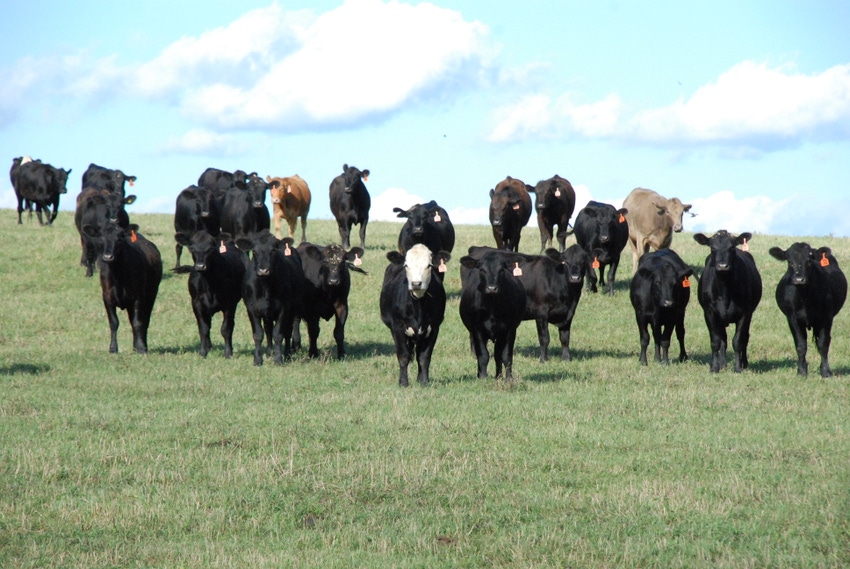High-risk health lessons
Employee morale is a key to success
September 14, 2018

Sponsored Content
“In this industry, most every employee takes great pride in caring for the cattle,” says Rich Porter of Porter Cattle Co. at Reading, Kansas. “Where cattle health has gotten worse over time for high risk calves, keeping employees from getting discouraged is one of the most important things I can do.”
Calves Porter buys for his stocker operation are the walking definition of high risk. They’re typically, light-weight, purchased one at a time, then assembled into loads by long-time order buyers in the Southeast.
As for industry health trends, you’re hard-pressed to find stocker operators or cattle feeders who believe cattle health is improving rather than getting worse over time, even though pharmaceutical technology and management is the most advanced in history.
Suggested reasons include the trend of younger, often lighter cattle entering the market channel, antibiotic resistance, as well as genetic potential and subsequent management that might overwhelm the immune systems of some cattle.
“The wrecks are getting worse and there are more cattle that don’t respond to antibiotic treatment, particularly on high-risk, long-haul cattle,” says Porter, a past winner of the National Stocker Award, sponsored by BEEF and Zoetis.
At the same time, Porter explains folks working with stocker cattle look at other aspects of the operation or related ones, and see mostly positive trends. Whether it’s average daily gain in the feedlot or corn yield, the year-to-year metrics point to improvement. That adds to the discouragement of those unable to coax lower morbidity and mortality rates.
“When they see death loss and pull rates increase every year, it can become a morale issue,” Porter says. “If they get down and think that what they do isn’t making any difference, things can get worse.”
In order to keep employees positive, Porter starts with communication.
“I tell them as long as they’re fully implementing the protocols outlined by our consulting veterinarian and local veterinarian, then they’re doing their job, they’re doing all that they can do,” Porter explains. “I can’t say I convince them, but it’s one of the most important things I do.”
Along with providing their specific expertise, Porter says his consulting veterinarian and nutritionist offer employees a view from outside the operation. They can tell them how their success stacks up against others facing the same challenges, not by operation name, but overall.
Porter takes great pride in having Bob Smith, DVM of Veterinary Research & Consulting Services, LLC as his consulting veterinarian and D.J. Jordan of Cattlemen’s Nutrition Services, LLC as his consulting nutritionist.
“My employees have the chance to work with and learn from top professionals in their fields,” Porter explains. Plus, Porter makes a point to keep the communication a direct line between employees and consultants. He and the consultants agree on protocols. After that, the communication is directly between employees and the experts.
“This way, the experts know I’m not mangling their excellent advice,” Porter says. Of course, management practices also contribute to giving calves the highest odds of success.
For one thing, cattle receive a first round of vaccinations before setting foot on the trailer destined for east-central Kansas. Processing after arrival is all about low-stress handling, including the use of innovative, hydraulic Turret Gate systemsthat virtually eliminate the need for anyone to be inside an alley, pen or tub.
Next, Porter explains, “The last thing I’d want to give up is the ability to have these calves on grass 90% of the time, while also being able to limit-feed them. We’re trying to marry the best of both worlds, between a conventional cattle-feeding system and grazing cattle on a section of grass.”
In their case, for the first 45 days, cattle at Porter Cattle Co. are in one of 16 potload-sized pens that open into grass traps of 10-20 acres.
Briefly, except for a three-hour period each day when calves are limit-fed, they spend the rest of the time on grass. The ration (as-fed basis) is about 70% wet distiller’s grains (WDG) and 30% long-stemmed hay.
“It seems counterintuitive, wanting to limit the amount of feed, but the calves we receive are dealing with so much in their lives. They’ve been weaned at the sale bar, missed meals, some are sick and not eating,” Porter explains.
By limiting the feed (no more than 2.2% of body weight) and by the time feed is available, cattle should be aggressive coming to the bunk. Consequently, Porter explains pulling cattle is easier and more accurate.
Then there’s the grass.
“By giving them a chance to spread out, there’s not as much nose-to-nose contact,” Porter explains. “Plus, here in eastern Kansas where pens get wet and muddy, it’s the difference between night and day with the cattle on grass. It’s surprisingly helpful in the summer, too, with less heat and no dust.”
About the Author(s)
You May Also Like



